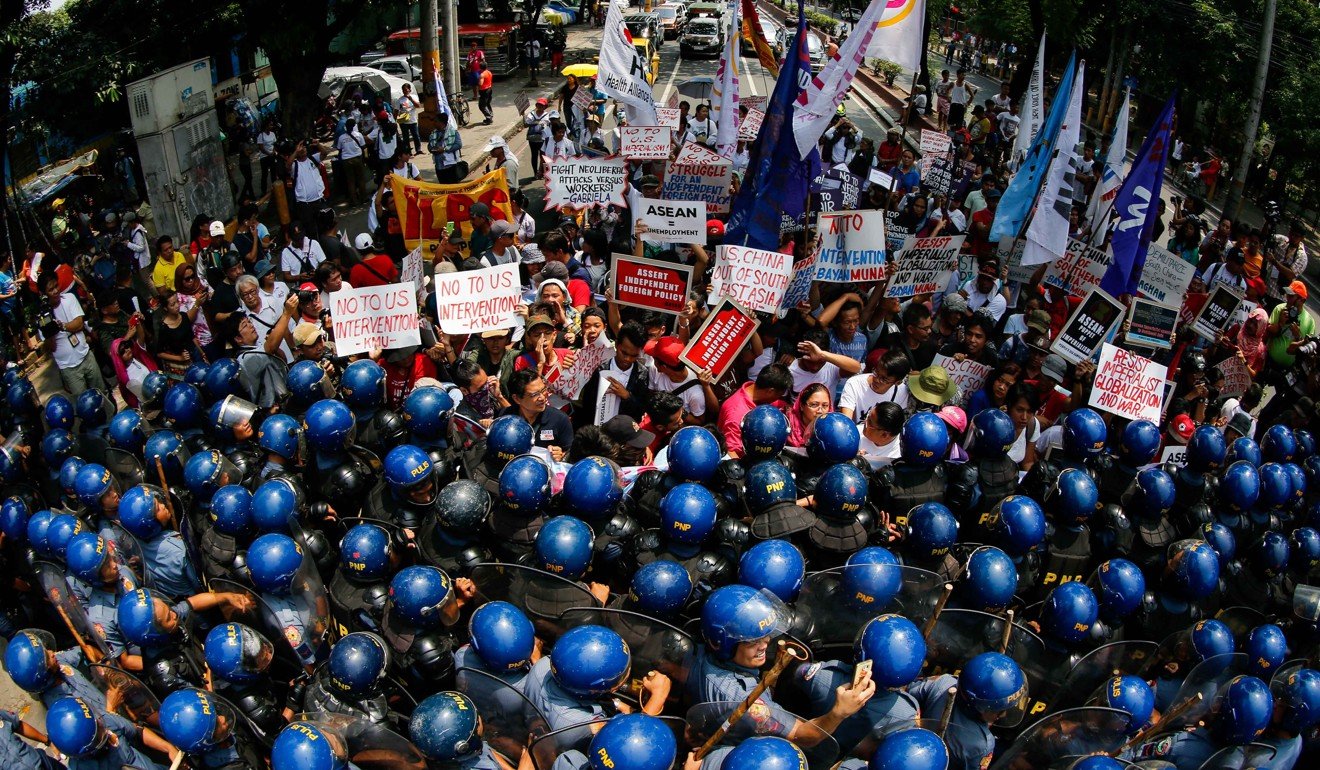
Asean’s response to Chinese militarisation in the South China Sea? Keep quiet and carry on
Huong Le Thu says the recent summit demonstrates yet again why sweeping contentious issues such as the South China Sea under the carpet will only doom the grouping to irrelevance

As far as the Association of Southeast Asian Nations is concerned, the islands in the South China Sea are rising but the sea is sinking. The outcome of the 30th Asean Summit last week in Manila suggests that the Southeast Asian leaders reached their signature “consensus” on South China Sea issues. That is, they will not be addressed through the Asean mechanisms.
When asked in the 1990s what Asean does when it encounters a problem, the then secretary general, Filipino diplomat Rod Severino, said: “First, it may put the problem under the carpet and not highlight it. What is a problem today may cease to be so in the future.” Not much has changed since then.
Despite the tension around the disputes in the South China Sea and their challenge to regional stability, Asean has resisted the pressure to speak or act together. This has undermined its relevance as a regional actor. The most embarrassing display of internal disunity came in 2012 when Cambodia, as acting chair, failed to issue a joint statement concluding the summit. Ever since, each rotating chair has been nervous about losing face like Phnom Penh, and did its best in perfecting the art of mentioning but not addressing the South China Sea “elephant”.
Asean is known to sweep many pressing issues under its carpet. However, as promotion of the Asean Community 2015 (extended now to 2025) goes on, expectations about its self-claimed “centrality” have also grown.

Discontented with Asean elusiveness, the Philippines launched a legal case against China’s claims at the Permanent Court of Arbitration in the Hague. Despite a positive decision, it has had little impact. In the meantime, the Chinese have continued their island-building activities and militarisation.
The 30th summit reaffirmed that Beijing’s strategy works. Its statement merely underlined the concerns of some members and, in reaffirming long-term peace and stability, Asean leaders “forgot” the ongoing militarisation of the Chinese islands.
Rodrigo Duterte, the outspoken leader of the Philippines, admitted: “Who can pressure China? Us? ... Tell me. Educate me how.” Such a sense of helplessness might have been a result of disillusionment with Manila’s previous pursuit of a rule-based resolution.
Moreover, a perceived lack of US engagement may have further exacerbated Asean’s lack of confidence. The Trump administration’s reversal on the Trans-Pacific Partnership has created a perception of “abandonment” of Southeast Asia. This is a further blow to Asean’s already low morale.
As such, a sense of debility infects Asean’s high-level gatherings. Like some family reunions, the meetings are only for show, but have little of substance. The Filipino president’s joke on the sidelines of the summit was not far from reality: “It’s true. All the same. Nothing changes. We can do away with the [summit] in November.”

In the year that Asean is celebrating its 50th anniversary, the atmosphere has been less than celebratory. Some members are disillusioned by the lack of solidarity and some are resentful of pressure. It is fair to say that the majority is losing both faith and interest in the grouping.
Asean’s problem is not the South China Sea, Chinese militarisation on artificial islands or the harassment of fishermen. It is the gap in strategic thinking among its leaders. There is no agreement on what role Asean should play. While some believe Asean needs to speak with one voice to have influence in the region, others are reluctant to “stick their necks out”. The disparity among the leaders leads to decisions that compromise all but satisfy none (except maybe China).
The challenge for Southeast Asian leaders is how to rekindle the faith. Without that, the association will carry on, but as a shadow of its own potential. Asean leaders need to realise that what they sweep under the carpet today is likely to haunt them tomorrow.
Dr Huong Le Thu is a visiting fellow at the Strategic and Defence Studies Centre, Coral Bell School of Asia Pacific Affairs, Australian National University and an associate fellow of the ISEAS-Yusof Ishak Institute in Singapore